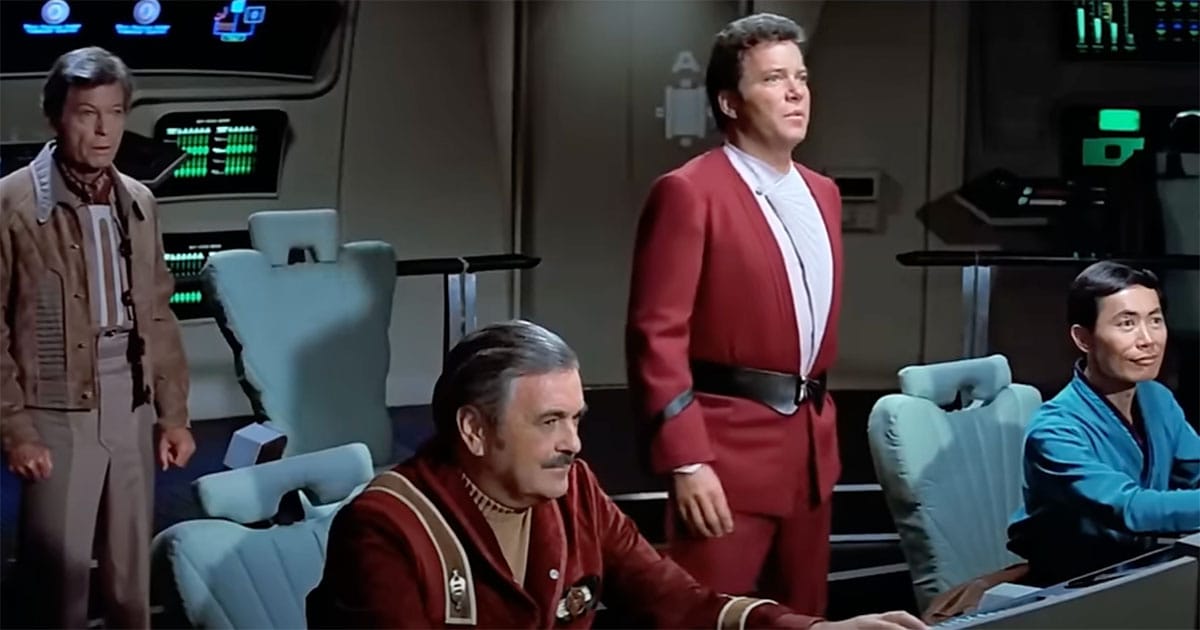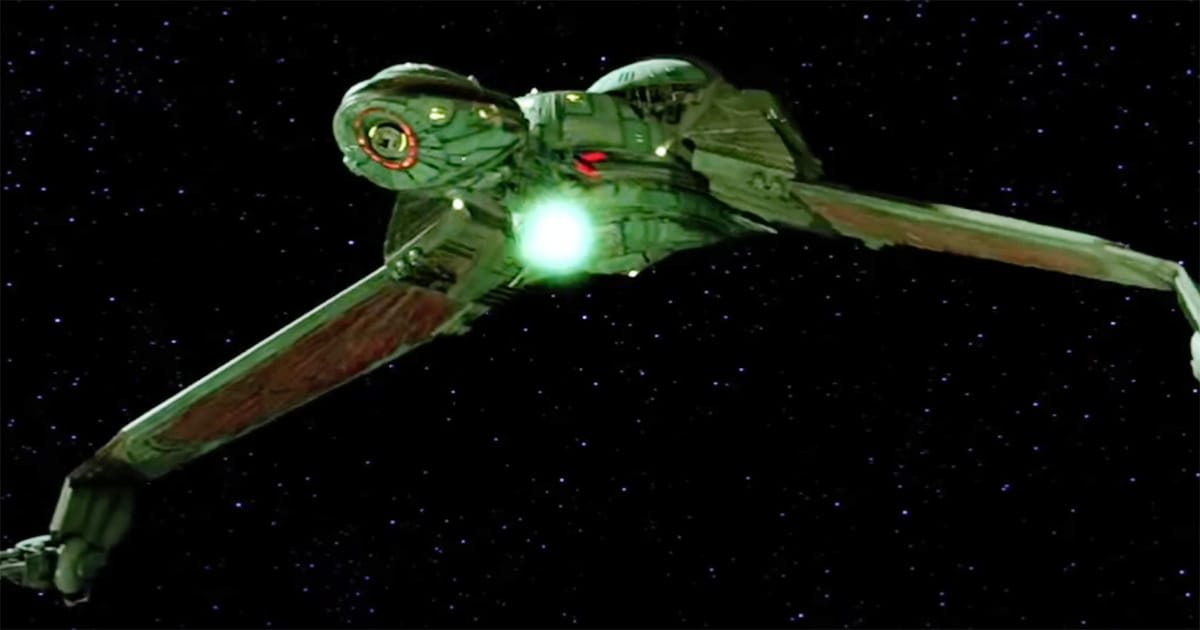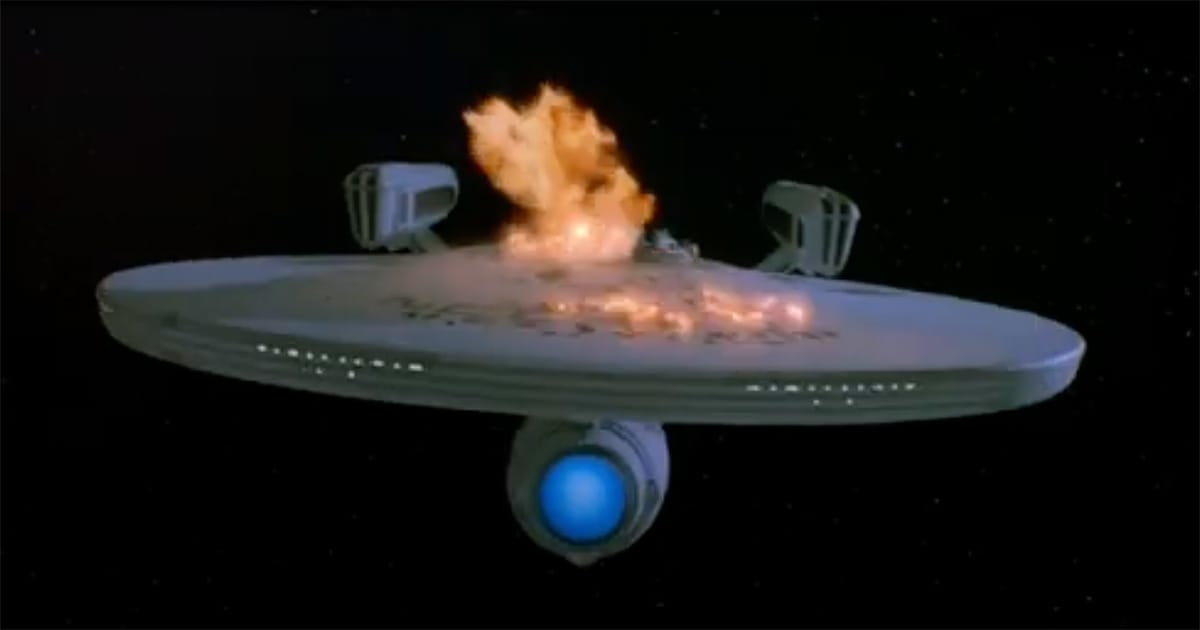Kirk's Gamble for a Friend
"Star Trek III: The Search for Spock" (1984), directed by Leonard Nimoy, explores themes of friendship and sacrifice, rated 6.6/10. A nostalgic classic.

"Star Trek III: The Search for Spock," released in 1984, marks Leonard Nimoy's directorial debut in the original Star Trek film series. The screenplay, crafted by Harve Bennett, continues the saga established in "Star Trek II: The Wrath of Khan."
This film features key performances from familiar faces, including William Shatner as Captain James T. Kirk, DeForest Kelley as Dr. Leonard McCoy, and Christopher Lloyd as the Klingon commander Kruge.
Following the emotional sacrifice of Spock in the previous installment, this film explores themes of friendship, loss, and redemption.
Kirk and his crew face the daunting task of retrieving Spock's life force from the Genesis Planet while contending with the scheming Klingons, who seek to exploit the Genesis device for their own ends.
While "The Search for Spock" is not without its flaws—including pacing issues and a somewhat predictable plot—it offers depth through its character-driven narrative and emotional stakes.
The film manages to highlight the crew's camaraderie, reminding viewers what they are willing to sacrifice for their fallen friend. As Kirk and company embark on their mission, they illustrate the enduring bond between friends amid the backdrop of extraordinary challenges—confirming that even in space, the heart of adventure lies in the relationships we forge.
| Attribute | Details |
|---|---|
| Title | Star Trek III: The Search for Spock |
| Director | Leonard Nimoy |
| Writer | Gene Roddenberry, Harve Bennett |
| Actors or Actresses | William Shatner, Leonard Nimoy, DeForest Kelley |
| Rated | PG |
| Runtime | 105 min |
| Box Office | $76,471,046 |
| U.S. Release Date | 01 Jun 1984 |
| Quality Score | 6.6/10 |
Synopsis
In "Star Trek III: The Search for Spock," Captain Kirk and his loyal crew of the USS Enterprise face an urgent mission. They aim to reclaim Spock's body from the Genesis Planet, where it was deposited after his death. Spock's katra, or soul, now resides within Dr. McCoy, and the crew faces the challenge of restoring Spock to his full self.

The film opens with Kirk and his crew dealing with the aftermath of their encounter with Khan. They discover that the Genesis Planet, created from the energy of a living star, has undergone rapid transformation and holds the key to Spock's revival. As they plot to steal the Enterprise and return to the Genesis Planet, the crew encounters significant opposition from the Klingons, whose commander, Kruge, covets the Genesis device's power.
Kirk's decision to embark on this heist leads to a series of tension-filled encounters with the Klingons, revealing the lengths to which he will go for friendship and loyalty. The crew faces ethical dilemmas, as their actions not only endanger their lives but also raise the question of how far one should go to save a friend. Ultimately, the film culminates in a dramatic showdown and a poignant reunion that embodies the themes of sacrifice and camaraderie.
"The Search for Spock" offers a mix of action and emotional depth, reinforcing the idea that friendships can endure beyond mortality. The film successfully sets the stage for future adventures while providing a satisfying resolution to Spock's journey.
Themes
"Star Trek III: The Search for Spock" presents a rich tapestry of themes woven through its narrative, reflecting the emotional weight of friendship, sacrifice, and the ethical boundaries of loyalty.
The film invites viewers to reflect on the deeper meanings of life and death, exploring how interconnectedness defines human experience, even in a vast universe.
From the very beginning, the film establishes an atmosphere of somber reflection. The camera captures the desolate beauty of the Genesis Planet, an environment filled with both promise and peril. The visuals showcase lush landscapes, a stark contrast to the weight of Spock's death, inviting viewers to ponder nature's duality. The film strikes a balance between breathtaking scenes of interstellar exploration and grounded emotional moments. The score, composed by James Horner, emphasizes this tonal shift. Its stirring melodies evoke deep emotional responses, particularly during pivotal scenes, amplifying Kirk's journey as both commander and friend. The music underscores the film's essence, allowing the audience to feel the tumult of loss and longing.
At its core, the film examines what it means to be a friend and to fight for those we care about. Kirk, McCoy, and the crew redefine loyalty as they risk their lives to reclaim Spock's essence. The audience witnesses Kirk's internal struggle as he wrestles with the gravity of his actions. He knows that stealing the Enterprise represents a betrayal of Starfleet principles. Yet his relentless drive to resurrect Spock highlights the film's central theme. The profound connections that bind individuals together in a shared quest for meaning.

The ethical dilemmas faced by Kirk and his crew raise critical questions about the morality of their mission. They navigate a fine line between right and wrong in their battle against the Klingons. As they face Kruge, the commander embodies the ruthless pursuit of power, contrasting sharply with Kirk's inherently personal quest. This dichotomy reveals that sacrifice often tastes bittersweet. The desire to protect friends can lead to profound moral quandaries. The film's climax—a confrontation aboard the Enterprise—captures this theme powerfully, showcasing both the fragility of good intentions and the resilience of friendship.
The portrayal of loss resonates deeply throughout the film. Kirk and his crew embody the human experience of mourning, grappling with the emptiness Spock's absence creates. This exploration of grief, while not overly sentimental, strikes a chord with the audience as Kirk's pain becomes almost palpable. The moments when McCoy struggles with Spock's katra provide an interesting lens through which viewers see the complexities of integrating loss into daily life.
"Star Trek III: The Search for Spock" stands out in the franchise by grounding its sci-fi spectacle in relatable human emotions. The film's vision of the universe extends beyond thrilling space battles. It urges viewers to reflect on the significance of their connections with others. Each scene contributes to a larger meditation on life, death, and the ties that bind us together.
As the credits roll, audiences may find lingering thoughts on sacrifice and loyalty in their minds. "The Search for Spock" captures the essence of what it means to be human amid the vastness of space—a testament to enduring friendship in the face of loss. This exploration of profound themes leaves an indelible mark, inviting viewers to revisit its powerful message time and again.
Who Will Enjoy Star Trek III: The Search for Spock
"Star Trek III: The Search for Spock" appeals to a variety of viewers, extending beyond traditional science fiction enthusiasts. While fans of the Star Trek franchise will undoubtedly find the film engaging, its themes and narrative can resonate with a broader audience. Those who appreciate character-driven stories and explore human connections may find themselves drawn to this film.
For individuals navigating personal loss or seeking inspiration about friendship, "The Search for Spock" serves as a reflective experience. It offers a poignant meditation on loss, making it suitable for viewers who enjoy contemplative cinema that dives into emotional depths. This theme may resonate particularly well with those in transitional life phases—college students grappling with the departure from home, or adults rediscovering their friendships post-career changes.
The film also works as a compelling choice for family movie nights, particularly when parents want to introduce their children to science fiction's more philosophical side. Watching it with family can spark meaningful conversations about loyalty and sacrifice. Such discussions can enrich understanding and perspective on how one navigates relationships throughout life.
Moreover, "The Search for Spock" fits well within the context of a cozy weekend movie marathon. When viewed alongside other Star Trek films, it provides contextual continuity and a deeper appreciation of character arcs. Even those unfamiliar with previous installments may still enjoy the movie's core themes, as it stands on its own merit.

"Star Trek III: The Search for Spock" does more than deliver spectacular space battles and visual effects. It focuses on the bonds between friends, the struggles of loss, and the ethical complexities of loyalty. This character-centered storytelling elevates the film beyond typical genre fare, allowing it to resonate across varied interests. As we explore friendship, sacrifice, and redemption against vast cosmic backdrops, the film invites viewers to reflect on their connections with others. "The Search for Spock" encapsulates essential aspects of the human experience, making it a poignant addition to the science fiction canon.

